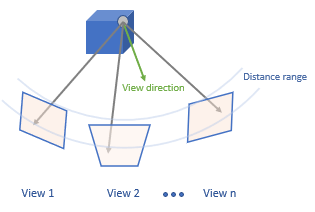worldpointset
Manage 3-D to 2-D point correspondences
Description
The worldpointset object stores correspondences between 3-D world
points and 2-D image points across camera views. You can use a worldpointset
object with an imageviewset object
to manage image and map data for structure-from-motion, visual odometry, and visual
simultaneous localization and mapping (SLAM).
Creation
Syntax
Description
wpSet = worldpointset
Properties
Object Functions
addWorldPoints | Add world points to world point set |
removeWorldPoints | Remove world points from world point set |
updateWorldPoints | Update world points in world point set |
selectWorldPoints | Select world points from world point set |
addCorrespondences | Update world points in a world point set |
removeCorrespondences | Remove 3-D to 2-D correspondences from world point set |
updateCorrespondences | Update 3-D to 2-D correspondences in world point set |
updateLimitsAndDirection | Update distance limits and viewing direction |
updateRepresentativeView | Update representative view ID and corresponding feature index |
findViewsOfWorldPoint | Find views that observe a world point |
findWorldPointsInTracks | Find world points that correspond to point tracks |
findWorldPointsInView | Find world points observed in view |

